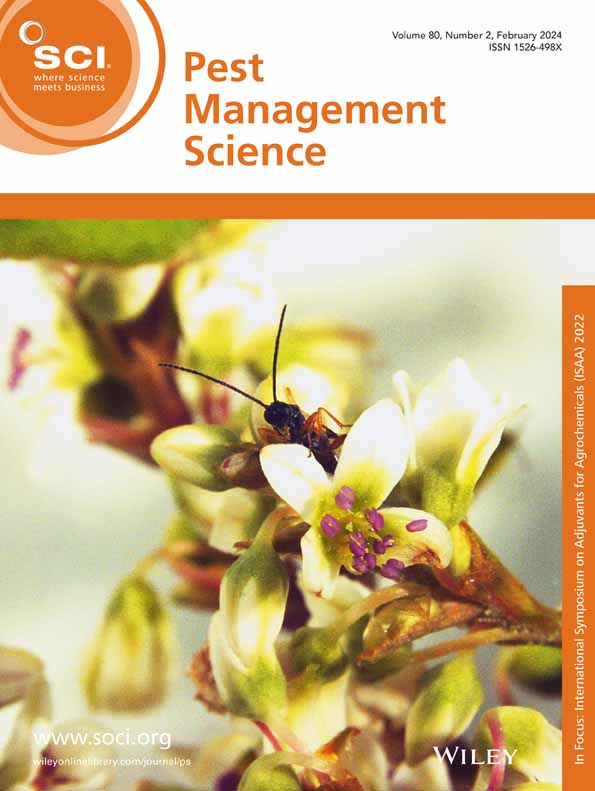Evaporation, spreading, and possible uptake of droplets on sorghum (Sorghum bicolor) and cowpea (Vigna unguiculata) leaves using an imaging-based technology
Abstract
BACKGROUND
Sprayed agrochemical droplets have a dynamic evolution on the leaf surface, undergoing changes in shape and volume due to spreading, evaporation, and adsorption. To better understand these processes, an accessible imaging-based experimental methodology is presented to precisely measure droplet spreading, evaporation, and potential uptake by a leaf within a controlled relative humidity environment. Laboratory experiments were conducted to determine the effect of hydrocarbon surfactants, accelerators (light mineral oil), and humectants (high fructose corn syrup) on droplet spread, evaporation, and potential uptake when applied to sorghum (Sorghum bicolor ‘Tricker’) and cowpea (Vigna unguiculata) leaves.
RESULTS
Experiments on cowpea leaves showed uniform spreading and no change in evaporation compared to the predicted rate. In contrast, on sorghum leaves, results suggest that the volume loss rate exceeds the predicted evaporation rate (up to 23%), indicating a potential uptake by the leaves. Some accelerated dynamics on sorghum can be attributed to the lateral spreading observed on hairy leaves along the veins, increasing the contact area by an average of 65%. However, samples containing light mineral oil, typically considered an accelerant to aid in uptake, demonstrated the highest rate but exhibited minimal spreading.
CONCLUSIONS
The study demonstrates how droplet composition affects droplet dynamics on waxy and hairy leaves by using an imaging-based methodology to measure evaporation rates, volume loss, contact angle, wetted area, and spreading behavior. The findings highlight some of the complex coupling between the crop protection product composition and droplet life cycle on a leaf. © 2024 The Author(s). Pest Management Science published by John Wiley & Sons Ltd on behalf of Society of Chemical Industry.


 求助内容:
求助内容: 应助结果提醒方式:
应助结果提醒方式:


